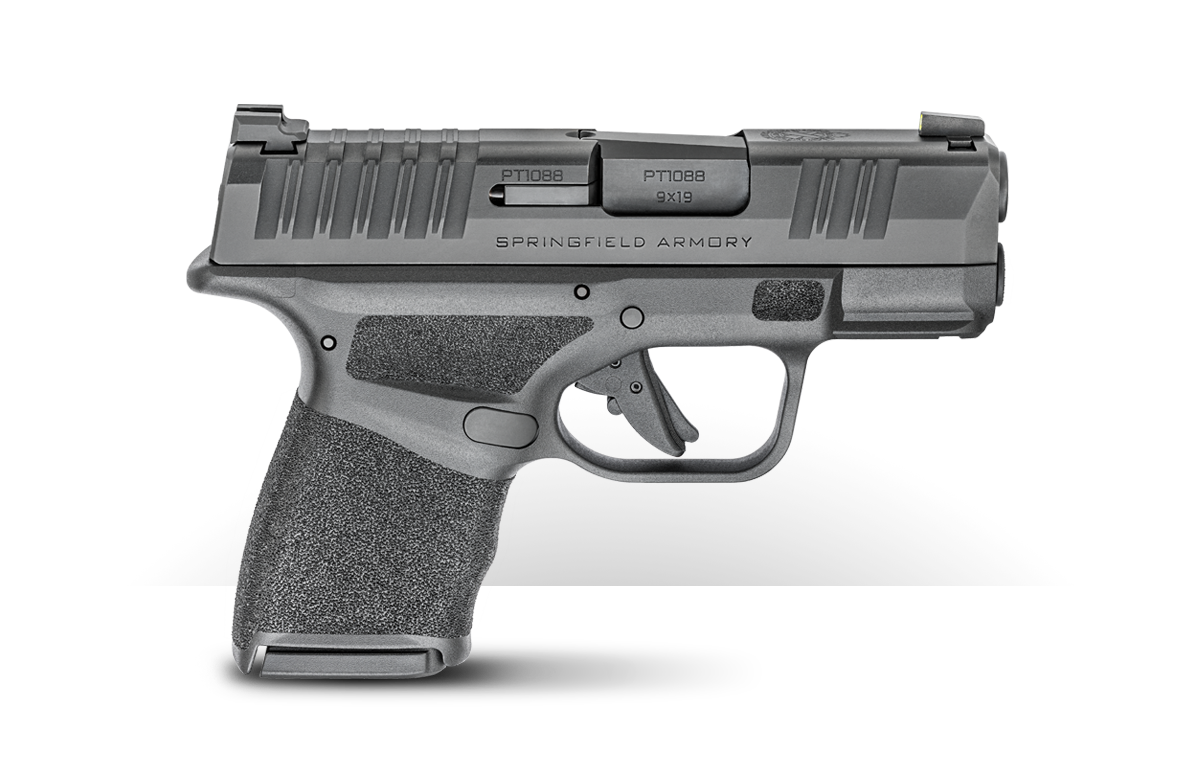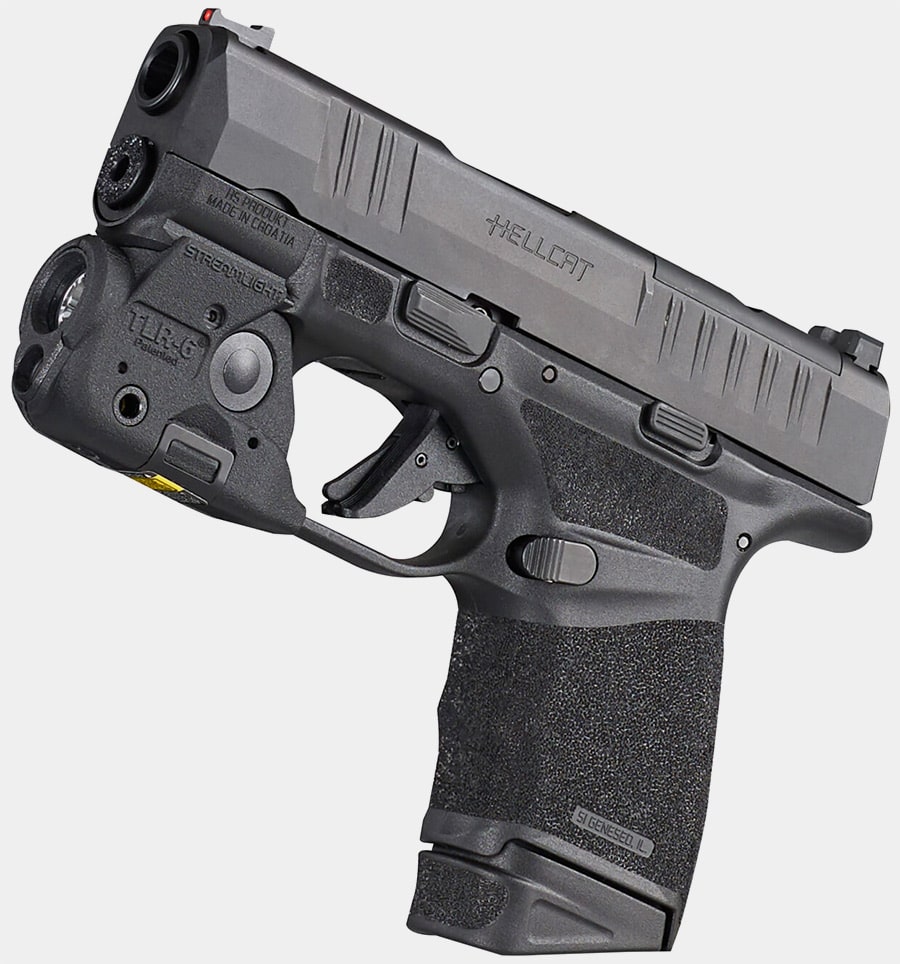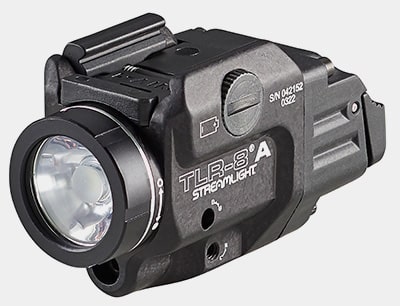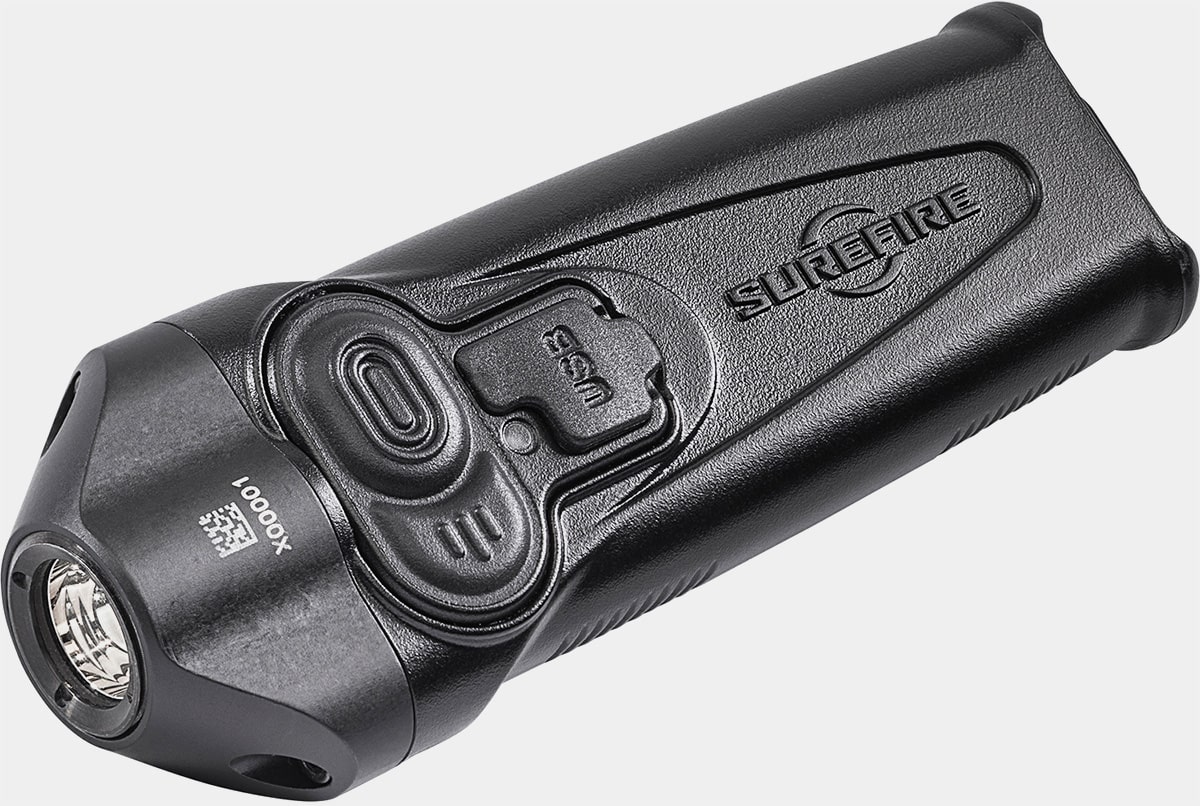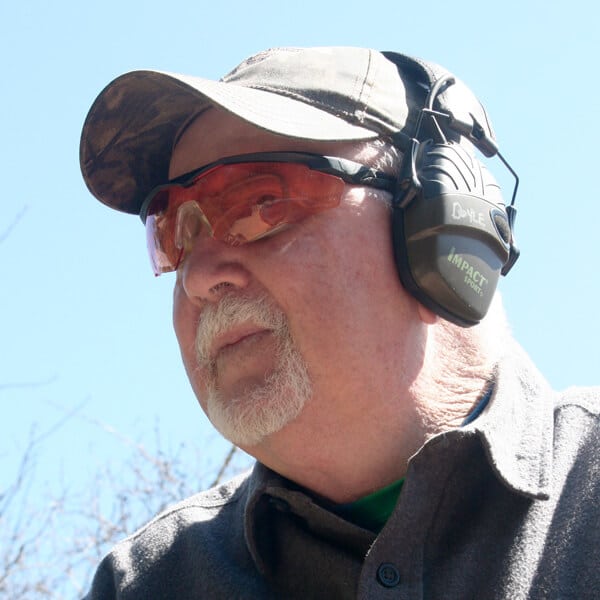Dominate the Dark: Low Light Primer for the Armed Citizen
August 24th, 2023
7 minute read
Fear of the dark among humans has been documented for centuries. While it’s most common in small children, just about all of us are a little apprehensive when light falls to low levels and we can’t see what is going on around us. It’s not the darkness, but what the darkness may be hiding.
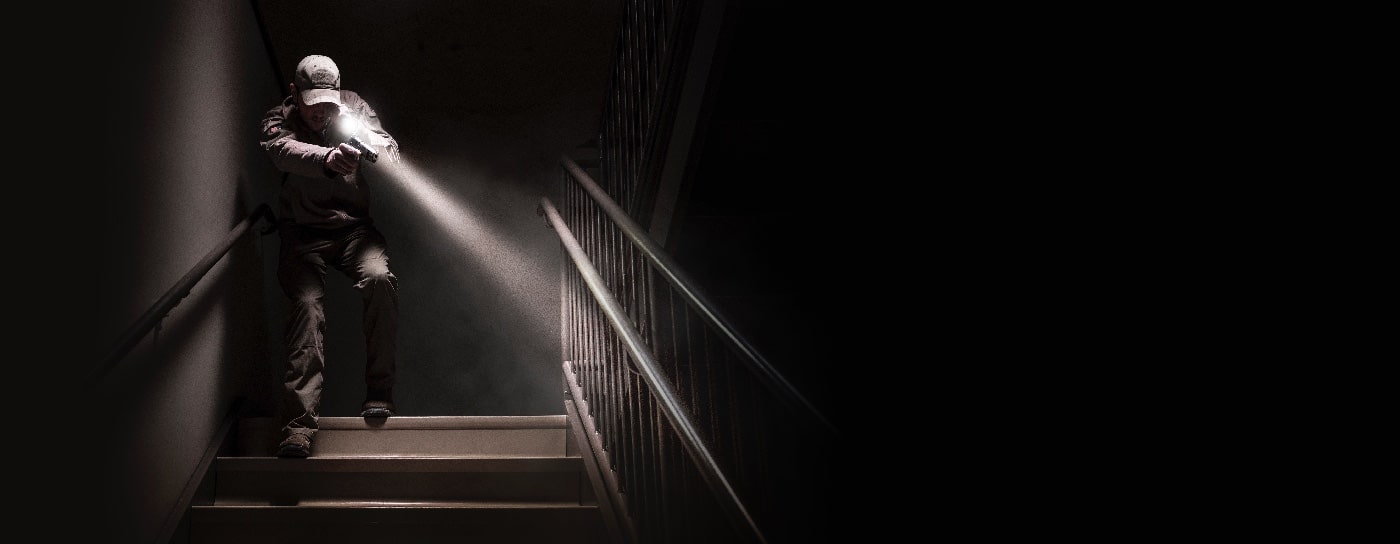
The reason for this is actually quite simple. Humans are diurnal creatures and are at their best during daylight hours or under artificial light. Sight remains our primary sensory receptor and when our vision is compromised, performance suffers. While other critters such as raccoons, opossums, skunks, leopards and hyenas get along quite well in the dark, darkness does indeed keep us on edge.
For individuals who are serious about personal defense, poor light does indeed bring with it a number of different challenges. For example, simply getting around an unfamiliar environment can be problematic. I can negotiate my own house in complete darkness without tripping and falling. However, getting around an unfamiliar hotel room or outdoor area is much more difficult. Likewise, locating a potential threat is yet another issue. In bright light, it’s just a matter of turning your head and looking in that direction. Poor light can mask all sorts of problems that may be difficult to pick up. And if you do spot the source of your concern, you have to quickly assess whether or not it’s a threat to your safety. Finally, should you be put in a position where you have to apply any level of force, will be tougher than performing the same task under bright light conditions.
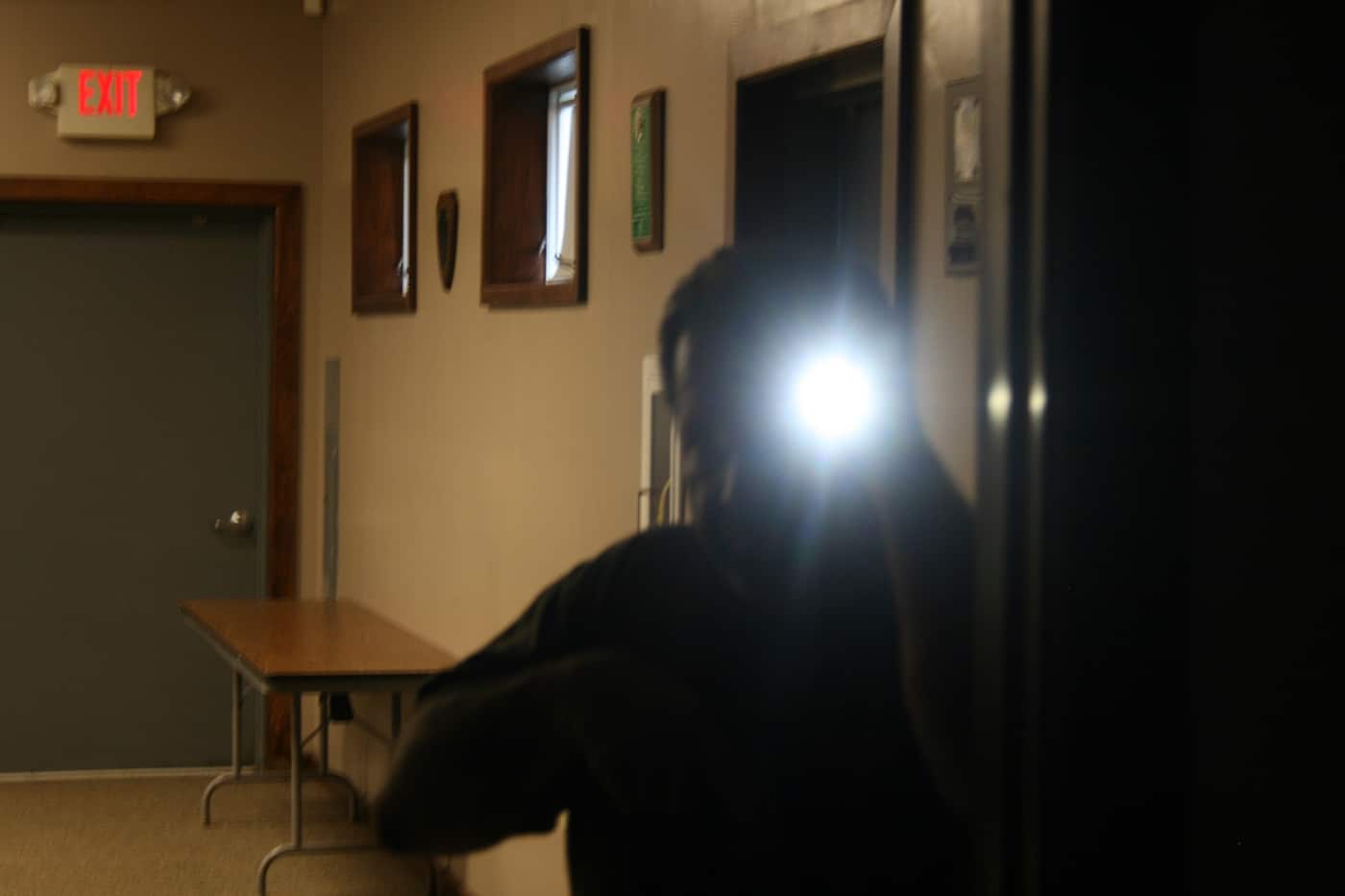
So how often does this stuff happen? For the responsible citizen, gunplay is indeed the rare exception, but consider the following. The collective law enforcement experience of over 150 years tells us that most police shootings take place under less-than-optimum light conditions. Clearly, armed citizens are not the police; however, it would appear that a significant number of defensive actions take place in poor light. If we are serious about personal defense, shouldn’t our equipment and training reflect this contingency?
Human Performance and Low Light
The human eye is a marvelous machine and is far more sophisticated than the best video camera. It focuses almost instantaneously, works in both bright and reduced light, and best of all it does not require batteries. The back lining of the eye contains millions of photoreceptor cells that give us the ability to see under a wide range of light conditions. Cone cells are clustered around the central part of the retina and give us the ability to see sharp images and color and give us depth perception. Rod cells are located around the periphery of the retina and allow us to see forms in poor light. As light levels fall, a chemical called rhodopsin is manufactured and begins to shut down cone activity and activates the rods.
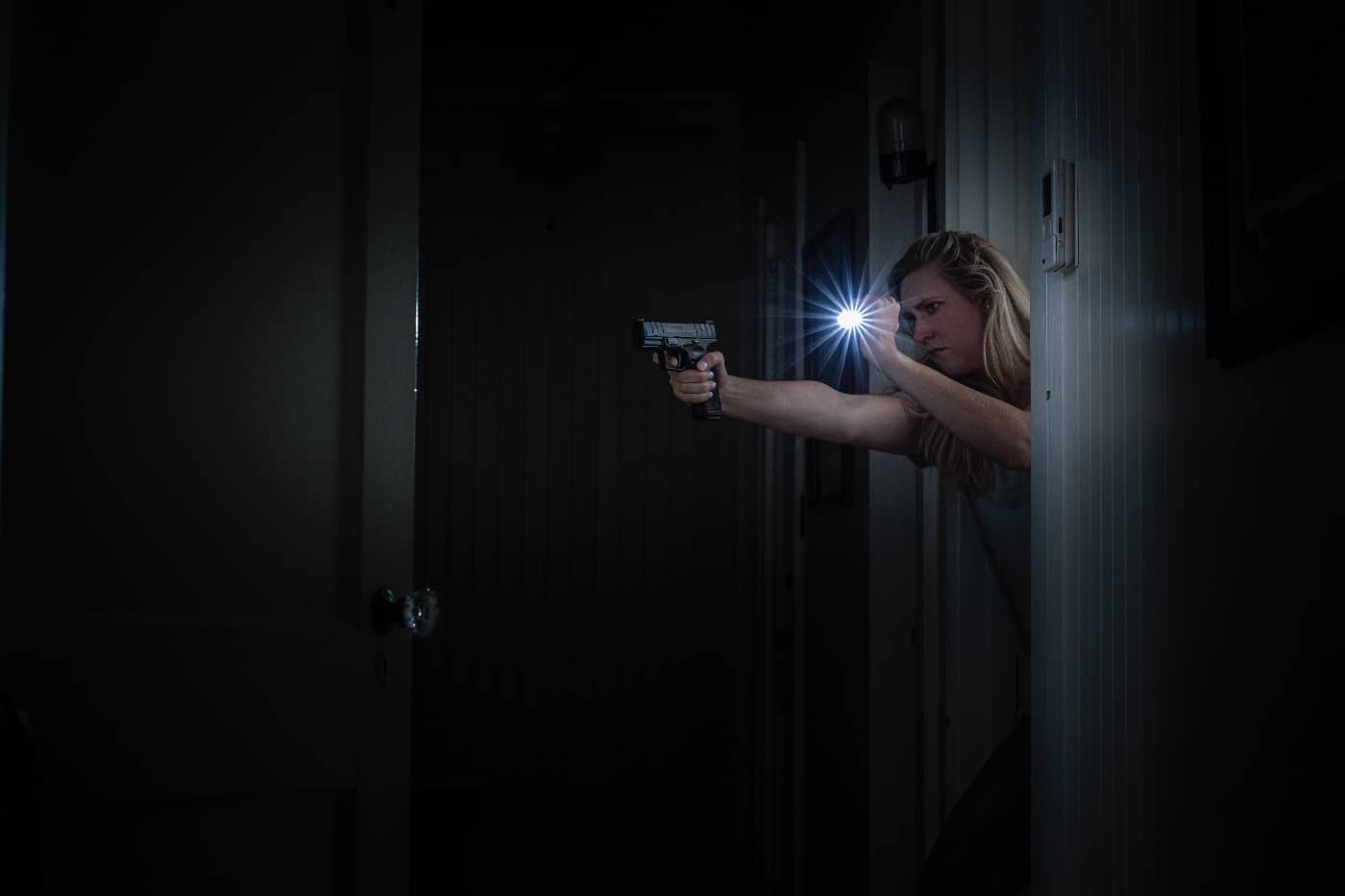
The end result is that under mesopic or starlight conditions, we no longer have the ability to see color or sharp images. Because of rod activation, we can still see forms and movement. The problem, of course, is exactly how we sort out the good guys from the bad guys in a situation like this. Make no mistake about it, the rules don’t change because it’s dark.
Bring a Light!
In many instances where a force response would be justified, you will not have a problem in identifying the threat. This is true both in daylight conditions as well as a reduced light. Distance between you and the subject are likely to be very short and these scenarios unravel inside of personal space. In view of that, your force response to an attack under low light conditions is no different than during bright light.
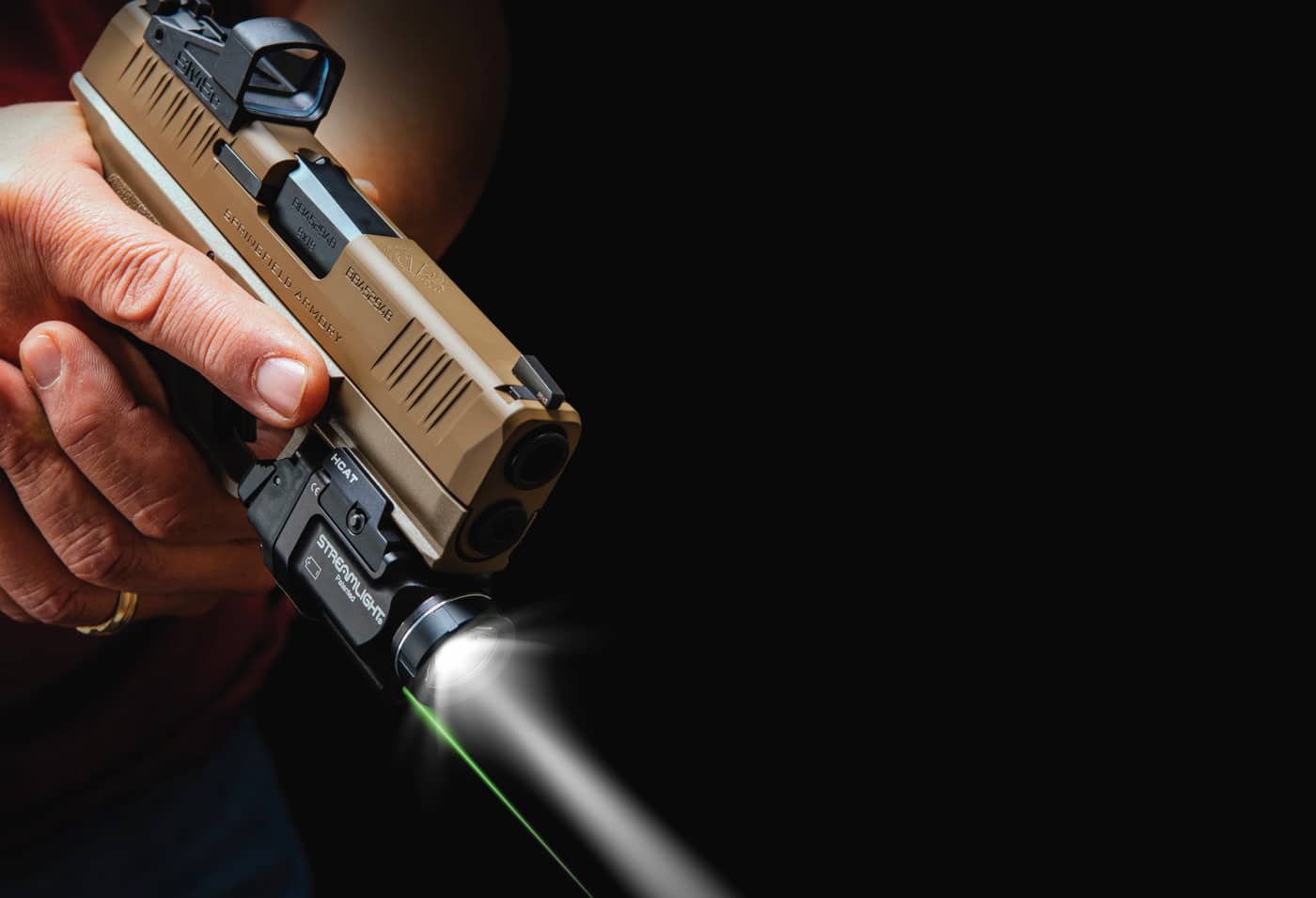
On the other hand, you could find yourself in a situation where a threat has not been positively identified, but something doesn’t look right. Consider someone walking towards you in a dimly lit parking garage. Your vehicle is off in the corner with no others nearby, yet this person continues to walk in your direction. Do we have a problem here? Perhaps, but we can’t be absolutely certain at this point. If this person continues to move in your direction and makes you feel threatened, putting a little light on the subject and issuing a challenge such as “May I help you with something?” could give you the advantage.
Many years ago, I attended a program at the Surefire Institute and came away with a wealth of information on low-light threat management. One of the points their staff instructor made was “light helps us make an informed decision”. Clearly, if you take up the gun, you better have a light close at hand. In one instance of which I am aware, a police officer shot and wounded his partner during a rooftop search for a burglar. We can only speculate how such an incident would have played out if a flashlight was brought into play.
Back when the earth was flat, a flashlight that could put out the necessary amount of light to identify a threat was large and bulky, and totally impractical for concealed carry. Today, improvements in technology such as LEDs and batteries have yielded flashlights that are extremely powerful, yet can discreetly slip into a pocket. Of late, I have come to fancy a Surefire Stiletto, a small flashlight of unconventional shape that incorporates all sorts of desirable features.
Fighting with a Light
There are indeed a number of flashlight-assisted shooting techniques that have been developed over the years. However, a detailed analysis of the advantages and disadvantages of the various techniques remains a topic for a different day. I do however break down these techniques into two categories, being hands together or hands apart. Because most scenarios where an armed citizen may be involved are fast-breaking in nature, I would make a strong case that a hands-apart technique such as the Modified FBI or Neck Index technique makes the most sense.
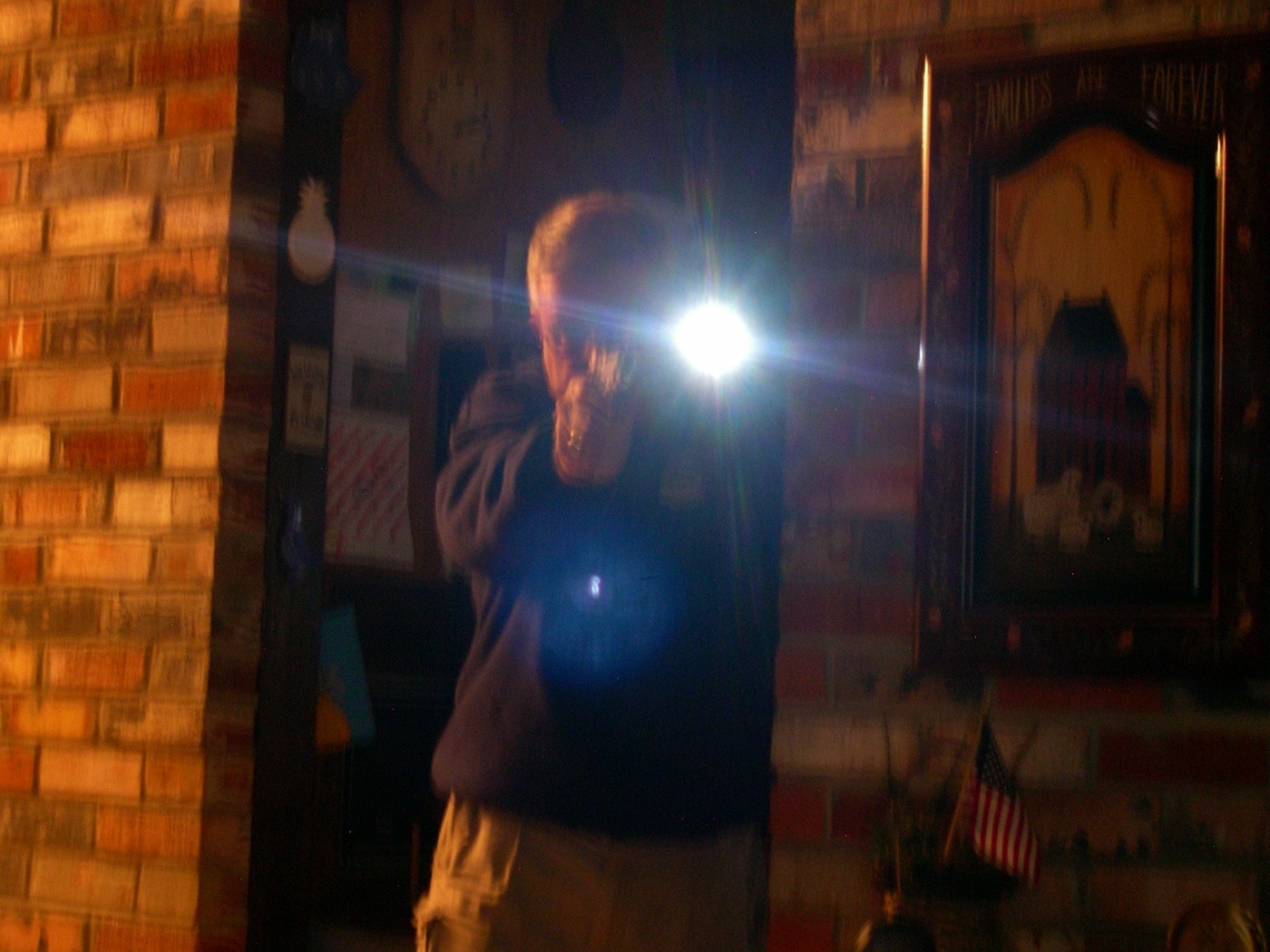
Having been around the police training game for many years, my observation is that many police officers are shortchanged when it comes to low-light training. Yes, they are taught to shoot with a light in hand, but little attention is given to the more common tasks such as searching or taking subjects at gun point. But what might this mean to the armed citizen? It’s critical that you understand that the only time your flashlight and pistol, with the finger on the trigger, are on the subject at the same time is when you have made the decision to shoot. That is yet another reason why I prefer a hands-apart technique as the light and pistol do not have to be directed to the same place. By doing this, you gain a huge advantage in safety and give up little should you need to shoot.
Other Tools
Over the last several years, weapon-mounted lights (WMLs) have come on strong. The agency I work for utilizes weapon-mounted lights on their duty pistols, and a few officers have even put them on the smaller pistols they use for off-duty carry. I personally don’t utilize a WML on my small carry guns, although I have no heartburn for those who choose to do so. In fact, companies such as Streamlight turn out units such as the TLR-6 which is optimized for a small hideout pistol such as the Springfield Armory Hellcat. A weapon-mounted light affords any number of advantages to the user, but does not necessarily replace a handheld light for many tasks. For a home defense pistol, a WML has much to offer.
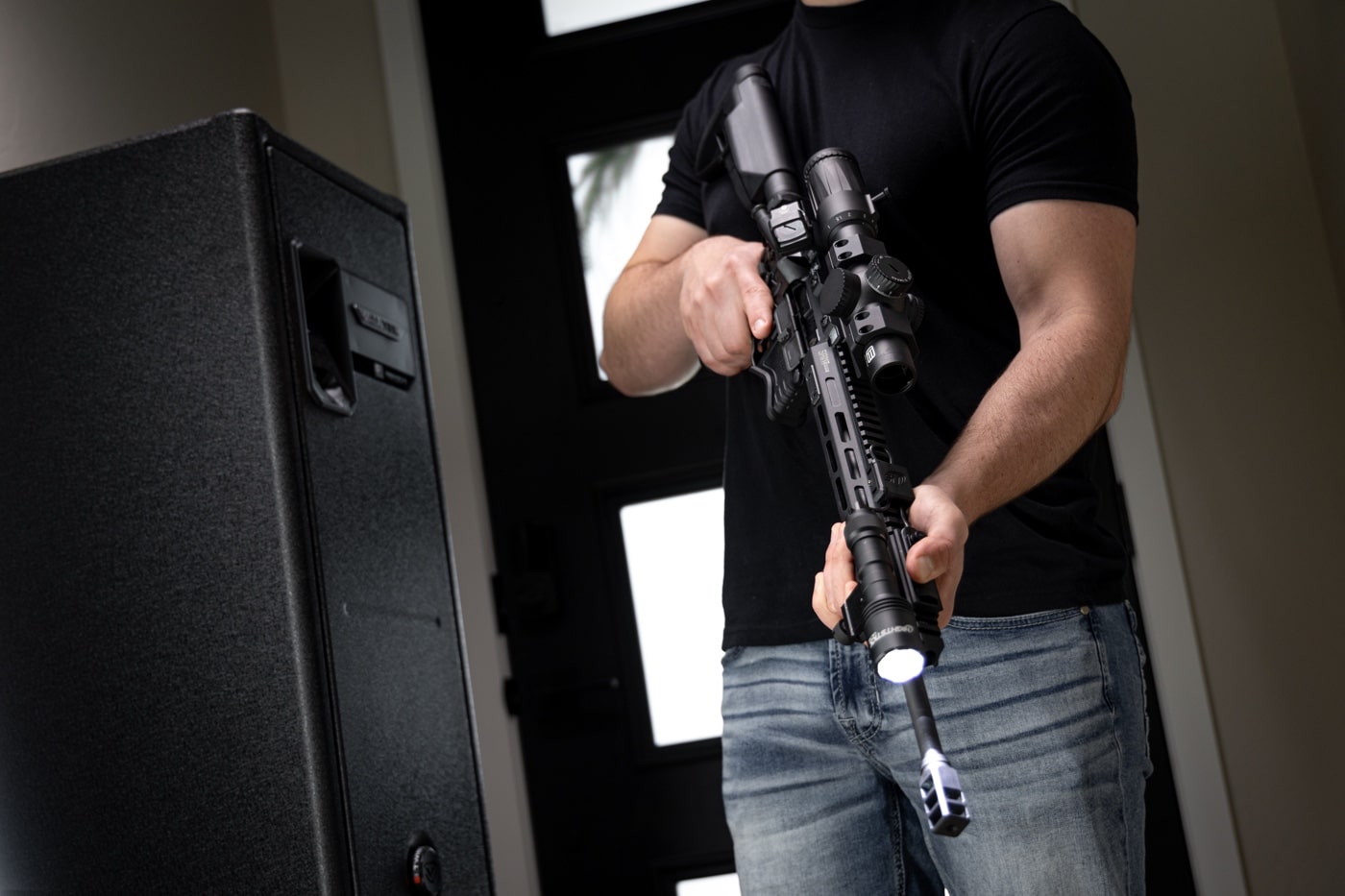
Tritium night sights and lasers are other tools that can help the cause. In particular, I am very fond of the Streamlight TLR-8 with white light and laser capabilities. Lasers are indeed, the ultimate night sight.
Of course, all the technology in the world is not going to help your cause if you don’t practice. I realize training opportunities are somewhat limited for the armed citizen, but if possible, I would seek them out. One stop-gap measure I have taken advantage of is Airsoft technology. This can be safely done in your own home, garage or basement. You can also practice snapping into flashlight-assisted shooting positions utilizing an unloaded gun (check it twice!).
Conclusion
So, pilgrim, get busy. Should you find yourself in a low light predicament, use your other senses, trust your instincts, and manage the light as best you can. Fate continues to favor the prepared individual.
Editor’s Note: Please be sure to check out The Armory Life Forum, where you can comment about our daily articles, as well as just talk guns and gear. Click the “Go To Forum Thread” link below to jump in and discuss this article and much more!
Join the Discussion
Featured in this article
Continue Reading
Did you enjoy this article?

 51
51




